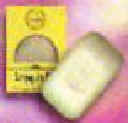|
Flowers are often assigned to countries as national cultural symbols. With Austria the edelweiss is associated, the Netherlands takes the tulip and Japan refers to the chrysanthemum. The Philippines have several national symbols, for example, the Carabaos (water buffalo), the Narra-Tree and a species of jasmine called Sampaguita or kampupot in Tagalog. Lets have a look on this flower. Taken only the botanical aspects, the jasminium sambac" offers no big surprise. It grows as a woody vine or shrub reaching up to 1,2 meters. The plant bears a single flowers or blossom bundles at the top of her branches. The Sampaguita is blooming full-year and has white, small, dainty, star-shaped blossoms, which open at night and wilt in less than a day. Unique however is the distinct sweet fragrance of the blossoms. It does not bear seed , so the cultivation is brought up by cuttings. The Philippines have different domestic species of jasmine growing wildly. But the Sampaguita was imported in the 17th century from Himalayan areas. In 1934 an American governor-general proclaimed the Sampaguita as national flower. However long before it has taken roots in the Philippine folklore and religious rites. It is mentioned in many legends, stories and songs - even in the 70s a rock artist adopted her name. Before independence it was a bud of hope in the consciousness planted in the days of colonial imposition". It symbolizes a whole series of virtues: fidelity, purity, devotion, strength and dedication. At least in two legends these virtues are reflected:
There
are different situations to meet the flower Sampaguita.
Lets
suppose you want to visit your girl friend and you are a Sampaguita fan.
Following an old tradition you have first to wash your white laundry
with Sampaguita (without washing powder). Your laundry will so get a
sweet
You should bring a present to your girl friend. You could decide for the Nintendo interactive play Sampaguita". Its recommended however to extinguish the 20 bad endings" before. Perhaps you think my present is a wrong one. There is an- other alternative - the special edition of the Sampaguita Barbie doll. The white long clothing - decorated with sampa blooms in white silk, the hand painted green leaves and the ponytail adorned by sampa blooms"- will bring your girl friend out of world of objections and she will go into ecstasies. On the way to your destination you use a Jeepney. What could dangle in the rear-view mirror of your Jeepney? Correct - the small, white, tender flower. Street children knock at the windscreen of the car again and again and may offer with sad eyes Sampaguita flower garlands for a few pesos. Your wandering eyes now discover the large-format billboard advertising for motion picture films. What kind of object the super stars are wearing around their necks? You are right again. Then you have a look in the daily newspaper und you see the seal of the Philippine senate including blooms of Sampaguita. On your rural way there may be the possibility to see a Flores de Mayo parade or a procession of the cross with arcs, head crowns and bouquets from sampa flowers. May be you feel bad later and you get headache. A Pause is arranged to visit a Grass-Doctor. The grass-Doctor - presumably familiar to native medicine gives you the advice to inhale the hot broth of Sampaguita blossoms or is preparing a syrup to restore your good health. He is also mentioning that the blossom is also recommended as a cardio tonic medicine and drug for wound treatment and against snake bites. Furthermore, the Sampaguita might also help in case of dirty skin and asthma. Finally is the doctor reading the future of our girl friend ? - to stop the milk flow of women in childbed.
You
are approaching your final destination. If you are still a loved one
your girl friend will greet you by putting
Is it possible that you can either see or smell the Sampaguita anymore? Only the Sampaguita can help you in such a case. Go to the nearest church with a Sampaguita prayer-arm lace. Overlook the saint statues adorned with Sampaguita. Concentrate completely on your wish Never again Sampaguita". And handle the small blossoms as prayer beads to a litany of wishes and intentions". (1) according to: Josef Genzor, Philippinische Märchen, Hanau /Main, 1987 (out of print) © W. Bethge
|
 smelling.
The work was hard, so its necessary to clean yourself with a
high-quality Sampaguita-soap as advertising says: Sampaguita-soap
offers a refreshing fragrance, opens the pits and makes soft the skin.
Not yet enough - to underline your attraction you use a noble perfume
containing Sampaguita essence
smelling.
The work was hard, so its necessary to clean yourself with a
high-quality Sampaguita-soap as advertising says: Sampaguita-soap
offers a refreshing fragrance, opens the pits and makes soft the skin.
Not yet enough - to underline your attraction you use a noble perfume
containing Sampaguita essence a necklace made of Sampaguita blossoms around your neck. Because she
knows, This gesture is a perfect offering to welcome and to honour
friends and guests". In former time, this gesture had also the
function of ring exchange during marriage procedures. Later the
moonlight is shining and your girl fried decides to intensify the
romantic setting. So she is putting Sampaguita candles of different
sizes on the table .............
a necklace made of Sampaguita blossoms around your neck. Because she
knows, This gesture is a perfect offering to welcome and to honour
friends and guests". In former time, this gesture had also the
function of ring exchange during marriage procedures. Later the
moonlight is shining and your girl fried decides to intensify the
romantic setting. So she is putting Sampaguita candles of different
sizes on the table .............